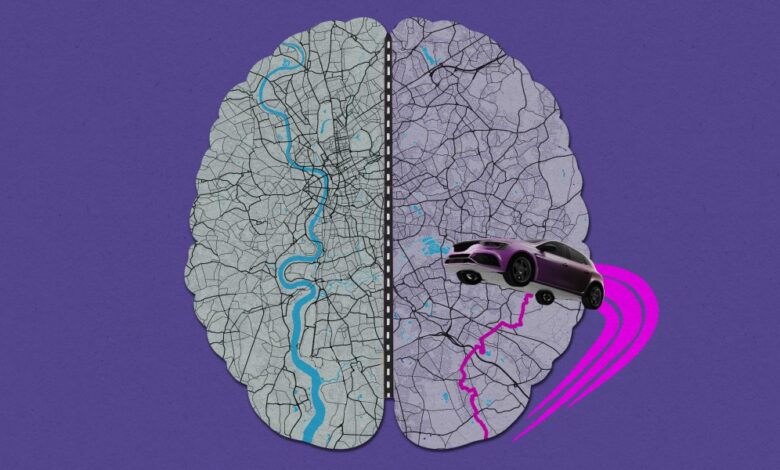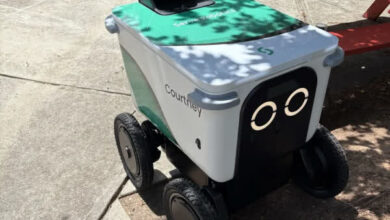The Download: Wayve’s driverless ambitions, and AI models built by kids

The UK driverless-car startup Wayve is headed west. The firm’s cars learned to drive on the streets of London. But Wayve has announced that it will begin testing its tech in and around San Francisco as well, which brings a new challenge: Its AI will need to switch from driving on the left to driving on the right.
As visitors to or from the UK will know, making that switch is harder than it sounds. Your view of the road, how the vehicle turns—it’s all different. The move to the US will be a test of Wayve’s technology, which the company claims is more general-purpose than what many of its rivals are offering.
For the first time, Wayve will go head to head with the heavyweights of the growing autonomous-car industry, including Cruise, Waymo, and Tesla. Will Douglas Heaven, our senior AI editor, visited the company’s office for a ride-along. Read on to find out what he thought.
Kids are learning how to make their own little language models
“This new AI technology—it’s very interesting to learn how it works and understand it more,” says 10-year-old Luca, a young AI model maker.
Luca is one of the first kids to try Little Language Models, a new application from Manuj and Shruti Dhariwal, two PhD researchers at MIT’s Media Lab, that helps children understand how AI models work—by getting to build small-scale versions themselves.
The program is a way to introduce the complex concepts that make modern AI models work without droning on about them in a theoretical lecture. Instead, kids can see and build a visualization of the concepts in practice, which helps them get to grips with them. Read the full story.
—Scott J Mulligan
The must-reads
I’ve combed the internet to find you today’s most fun/important/scary/fascinating stories about technology.
1 The Biden administration has outlined its AI plans
For everything from national security to nuclear weapons. (Reuters)
+ It’s banned government agencies from using AI in undemocratic ways. (WP $)
+ But the majority of the proposals won’t come into effect after Biden leaves office. (NYT $)
2 OpenAI’s next major AI model is imminent
Its new flagship model, known as Orion, is slated for release by the end of the year. (The Verge)
+ Miles Brundage, the company’s head of AGI Readiness, is leaving. (Insider $)
3 This crypto gambling site is the 2024 election’s betting phenomenon
Polymarket’s odds are music to Donald Trump and Elon Musk’s ears. (NYT $)
+ Election betting is seriously big business these days. (Vox)
+ Musk is X’s highest-profile spreader of anti-immigrant conspiracies. (Bloomberg $)
4 Chinese AI video apps are taking America by storm
They’ve stolen a march on their US rivals. (The Information $)
+ I tested out a buzzy new text-to-video AI model from China. (MIT Technology Review)
5 Why did it take Amazon this long to make a color Kindle?
After 17 years, the e-reader’s technicolor makeover feels long overdue. (Wired $)
6 We’re living in a solar panel boom ☀️
They’re affordable, scalable, and everywhere. (The Atlantic $)
+ The race to get next-generation solar technology on the market. (MIT Technology Review)
7 The perils of building a computer in socialist Yugoslavia
An enterprising engineer managed to swerve the country’s import restrictions during the 1980s. (The Guardian)
8 The food industry is coming around to the rise of weight loss drugs
It’s cashing in on patients’ altered dietary needs with new product ranges. (WSJ $)
+ It’s not just obesity the drugs could curb, either. (Economist $)
+ Weight-loss injections have taken over the internet. But what does this mean for people IRL? (MIT Technology Review)
9 One Direction fans are finding comfort online
The death of former member Liam Payne is uniting them in grief. (WP $)
10 Silicon Valley is completely obsessed with this video game
But Factorio isn’t just fun—it’s also a pretty valuable teaching tool. (FT $)
Quote of the day
“Did she say ‘turtle marks?’”
—A TikTok user remarks on why Mexican content creator Delilah Barajas used the word ‘turtle’ instead of ‘torture’ in a bid to circumvent the platform’s ban on contentious terms and topics, Rest of World reports.
What happens when you donate your body to science
October 2022
Rebecca George doesn’t mind the vultures that complain from the trees that surround the Western Carolina University body farm. Her arrival has interrupted their breakfast. George studies human decomposition, and part of decomposing is becoming food. Scavengers are welcome.
George, a forensic anthropologist, places the body of a donor in the Forensic Osteology Research Station—known as the FOREST. This is Enclosure One, where donors decompose naturally above ground. Nearby is Enclosure Two, where researchers study bodies that have been buried in soil. She is the facility’s curator, and monitors the donors—sometimes for years—as they become nothing but bones.
In the US, about 20,000 people or their families donate their bodies to scientific research and education each year. Whatever the reason, the decision becomes a gift. Western Carolina’s FOREST is among the places where watchful caretakers know that the dead and the living are deeply connected, and the way you treat the first reflects how you treat the second. Read the full story.
—Abby Ohlheiser
We can still have nice things
A place for comfort, fun and distraction to brighten up your day. (Got any ideas? Drop me a line or tweet ’em at me.)+ Haunted houses can teach us about a lot more than just the past.
+ Sleepwalking is seriously strange.
+ Las Vegas has always been a weird and wonderful place, but is it weirder than ever? Time to find out.
+ As we get closer to November, it’s time to crack out this all-time classic.


